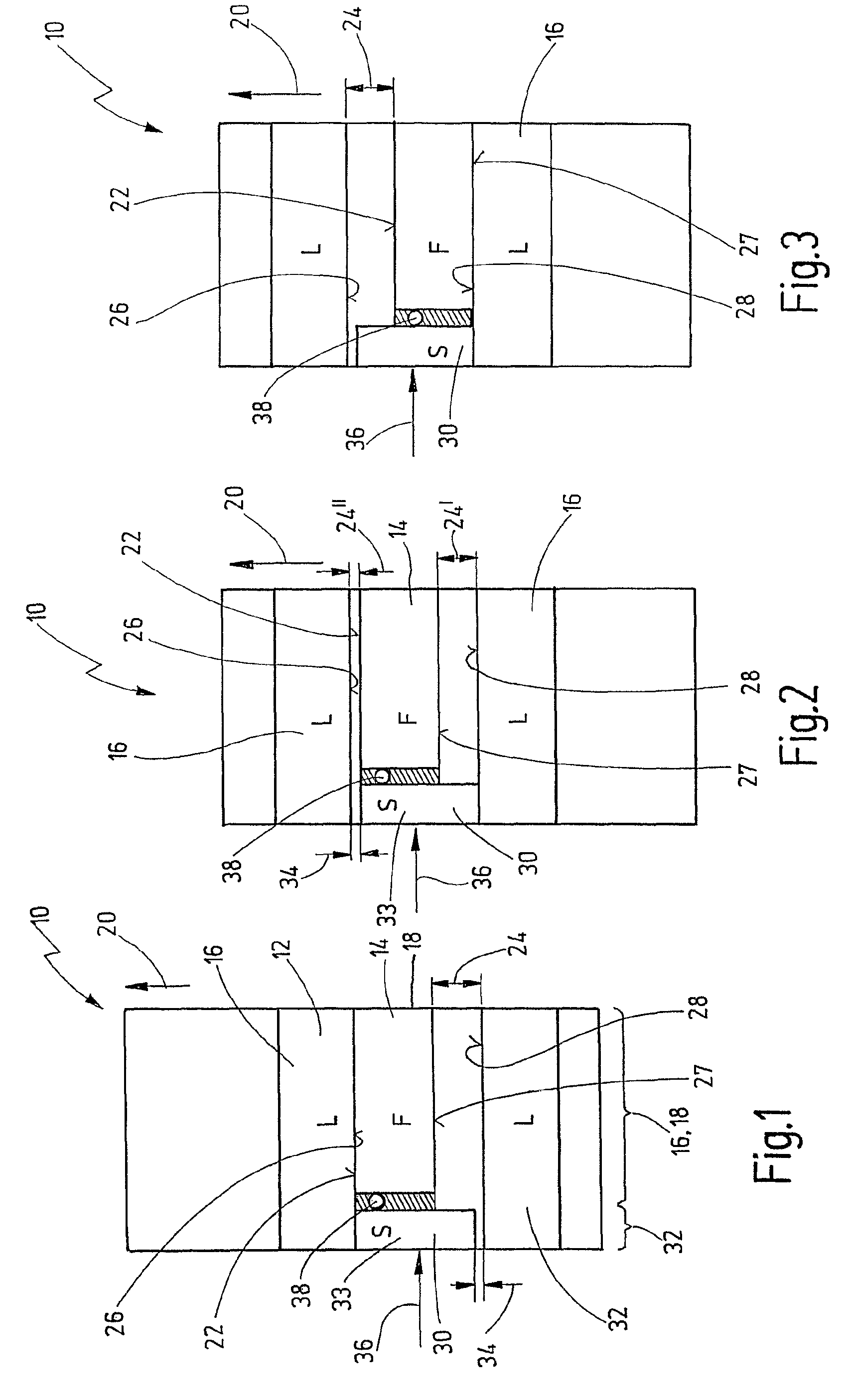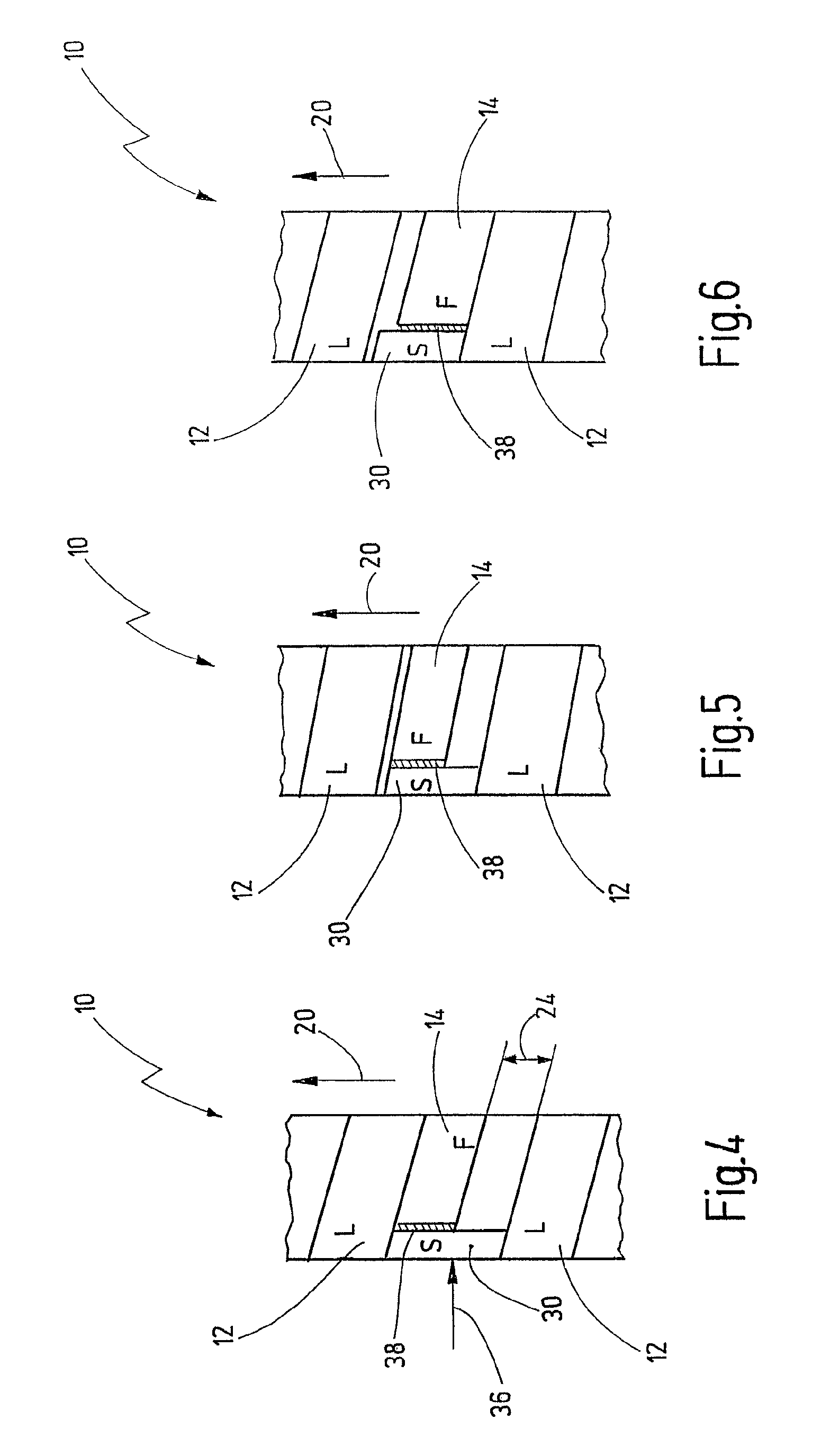Rattle-free component pairing
a technology of component pairing and rattling, which is applied in the direction of gearing elements, belts/chains/gearrings, portable lifting, etc., can solve the problems of rattling phenomenon, disadvantages in measures, and the need for additional weight and cost, and achieve the effect of low weigh
- Summary
- Abstract
- Description
- Claims
- Application Information
AI Technical Summary
Benefits of technology
Problems solved by technology
Method used
Image
Examples
Embodiment Construction
[0235]A first embodiment of a mechanical component pairing is illustrated in FIGS. 1 to 3 and is denoted generally by 10.
[0236]The component pairing 10 has a first component 12 in the form of a loose wheel and a second component 14 in the form of a fixed wheel. In the present case, the fixed wheel 14 is the driving component. The loose wheel 12 has a first component toothing 16. The fixed wheel 14 has a second component toothing 18.
[0237]The loose wheel 12 is driven by means of the fixed wheel 14 in a drive direction 20. Here, a thrust flank 22 of the second toothing 18 makes contact with a rear flank 26 of the first toothing 16.
[0238]The toothings 16, 18 are formed with a certain tooth flank play, which is denoted in FIG. 1 by 24.
[0239]In the present case, the tooth flank play24 is the distance between a rear flank of the second toothing 18 and a thrust flank 28 of the first toothing.
[0240]Toothings of said type are generally known. On account of the tooth flank play 24, so-called ...
PUM
 Login to View More
Login to View More Abstract
Description
Claims
Application Information
 Login to View More
Login to View More - R&D
- Intellectual Property
- Life Sciences
- Materials
- Tech Scout
- Unparalleled Data Quality
- Higher Quality Content
- 60% Fewer Hallucinations
Browse by: Latest US Patents, China's latest patents, Technical Efficacy Thesaurus, Application Domain, Technology Topic, Popular Technical Reports.
© 2025 PatSnap. All rights reserved.Legal|Privacy policy|Modern Slavery Act Transparency Statement|Sitemap|About US| Contact US: help@patsnap.com



